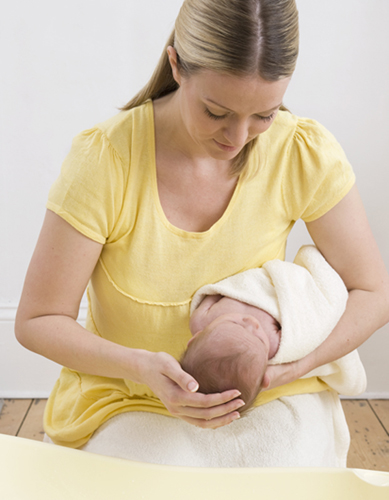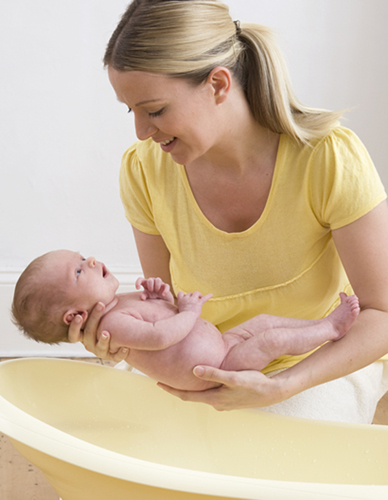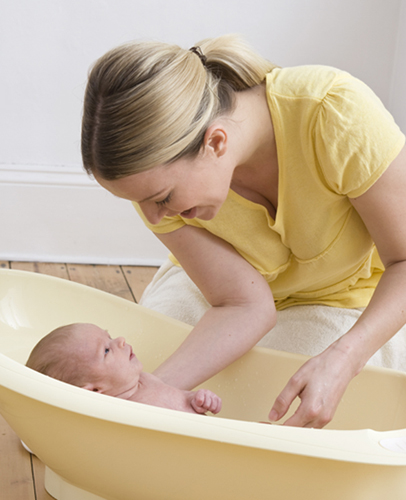By now, you and your partner will be starting to feel more confident about holding, handling, and feeding your baby.
Your baby today
It’s likely that both you and your baby are becoming more
confident with feeding. It’s common for new babies to bring up some milk
after each feeding, known as spitting up, and this is unlikely to cause
any harm. Talk to the doctor if you’re at all concerned.

Many parents feel uneasy
about giving their baby a bath since they worry about dropping a
slippery baby. Many also find that their baby objects strongly to being
undressed and immersed in water. Bathing should be fun, so if your baby
hates baths at first, sponge bathe him most of the time.
Make bathtime as stress-free as possible by gathering everything you
need before you start and make sure the room you undress your baby in is
warm and draft-free. After the bath, dry and dress your baby
immediately.
Diapers will be a part of
your life for the next couple of years. There is no need to routinely
change a diaper before or after feedings—just when there is a stool or
it is heavy with urine. After opening a diaper, wipe away all visible
feces with the diaper. Clean your baby’s bottom thoroughly with wet
cotton pads, wiping from front to back to avoid spreading germs. If
using a cloth diaper, use a cream to avoid diaper rash. If your baby
wears disposable diapers you may not need a diaper cream, but if he
starts to get a diaper rash, you may find that diaper cream will clear
it up.
Bathing your baby
Before you bath your baby,
have a towel ready to dry him and a clean diaper and change of clothes
at hand so that he doesn’t get cold after the bath. Half fill a baby
bath with water that feels lukewarm to your elbow. After bathing, dry
him quickly. Don’t use talcum powder, which he could inhale.
Wrap your baby in a towel, and support his head and shoulders while you wet his head with the other hand.

Remove the towel and lower your baby into the bath, supporting her head, shoulders, and bottom.

Still supporting his head, wash him with a washcloth or sponge; start with the face and end with the bottom.

Exercise basics
You will be
encouraged to do some gentle exercise as soon as you feel able, although
it’s best to wait until the six-week checkup before starting a strenuous program.
Try to maintain good posture since this will help relieve backaches.
Continue Kegel exercises after giving birth.
If you had a cesarean, wait until at least six weeks before starting an exercise program.
Start
with low-impact exercises, such as walking and Pilates. Gradually
increase the duration and intensity. You can also begin to strengthen
your abdominal muscles.
If you have any bleeding or feel faint, stop and consult your doctor.
Set realistic goals.